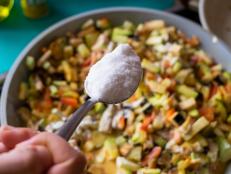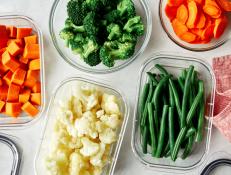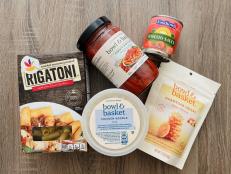6 Things You Might Not Know You Could Do With Cornstarch
If you need a substitute for an egg, a more tender cake or even a thicker cheese sauce, cornstarch is there.

Michelle Arnold / EyeEm / Getty
Cornstarch is more than gravy’s best friend. It brings structure to a fried chicken tender and tenderness to a fluffy cake, plus so much more. Made from the center part of the corn kernel, this starch is easy to find in any grocery store and it has a long shelf-life as long as you store it in an airtight container. Here are some ways cornstarch can help you in the kitchen — including some you might not have heard before.

Caitlin Ochs
Chicken-Fried Anything
When you dredge and fry chicken, steak, tofu and more, the standard set-up is flour, then your wet mix (like eggs and buttermilk) and then seasoned flour — you want a strong batter to cling to your food. By adding cornstarch to your dry mix, you keep the gluten in the flour from getting too tough, making for a better bite. Plus, the cornstarch helps build a more cohesive coating that keeps it from falling off as you fry. It also doesn’t absorb much oil, so it makes for a lighter and crispier result. Try it for yourself with Food Network Kitchen’s Best Fried Chicken recipe.
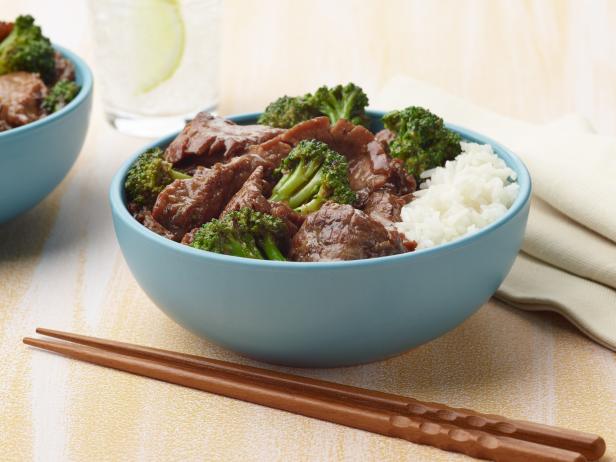
Renee Comet
Saucy Stir Fries
Adding a teaspoon of cornstarch to a marinade before stir frying adds a coating that seals in your meat — this keeps it juicy as the cornstarch protects it from the heat of the pan. Then, add a teaspoon of cornstarch to your stir-fry sauce or a slurry of cornstarch added at the end of cooking. This helps thicken and tie the sauce together, making for a well-rounded texture. Jet Tila applies this method in his tasty Beef with Broccoli recipe.
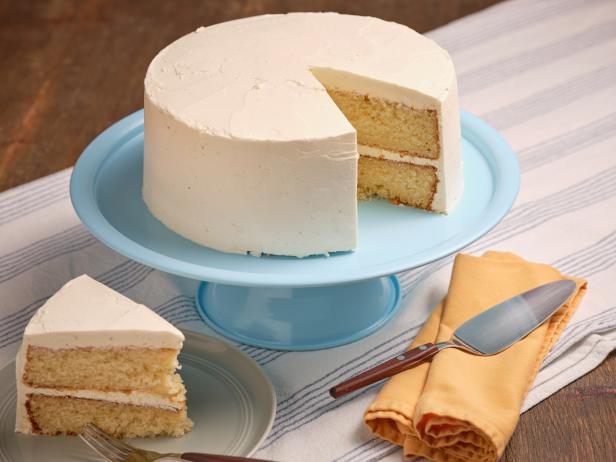
Caitlin Ochs
Perfect Cakes
Want a more tender cake? If you don’t have cake flour (or you just want to try this method), when you measure a cup of all-purpose flour for use in your cake, remove 2 tablespoons and substitute in 2 tablespoons of cornstarch. Gluten helps with cake structure, but reducing it with cornstarch make for a softer cake. We trust cornstarch so much it’s in our favorite Vanilla Cake.
Stand-Up Fruit Pies
We love to make the most of summer berries, and pie is a great reason to fire up the oven even in summer, but we also know how disappointing it is to slice into a pie only to have the filling run everywhere. Remedy this by whisking 2 teaspoons of cornstarch into the sugar you’re going to toss with your berries and then fill your pie as usual. Mixing it with the sugar will help disperse the cornstarch to avoid lumps. Once your pie gets baking, that cornstarch will get to work holding the filling all together.

Matt Armendariz
Egg Substitute
If you can’t use eggs but still want make baked goods, you can try 1 tablespoon of cornstarch well-mixed with 3 tablespoons of warm water as a substitute for one egg. This can be used in a recipe for cake, cookies or even a meatloaf. In this vegan sugar cookie recipe the cornstarch is added with the dry ingredients and mixed into the wet — another option that works well in a sliceable cookie.
Thick Sauces and Gravies
Even if you already are using cornstarch for gravy, let’s talk through the best method to use it. You always want to start by making a slurry: add a teaspoon or two of cornstarch to 2 to 3 tablespoons of water or stock and thoroughly whisk them together. Then add about 3/4 of this slurry to simmering gravy. You need to simmer cornstarch for a few minutes to activate it, so don’t rush it — it’s better to have to add a little more slurry than be stuck with too much. Once it’s the thickness you like, turn off the heat; if it boils, you might get lumps. You can apply this technique to any sauce — even a cheese sauce (just substitute milk for the water in the slurry!). A little cornstarch in a cheese sauce can help it masterfully cling to a veggie or a chip.
Related Links:
























